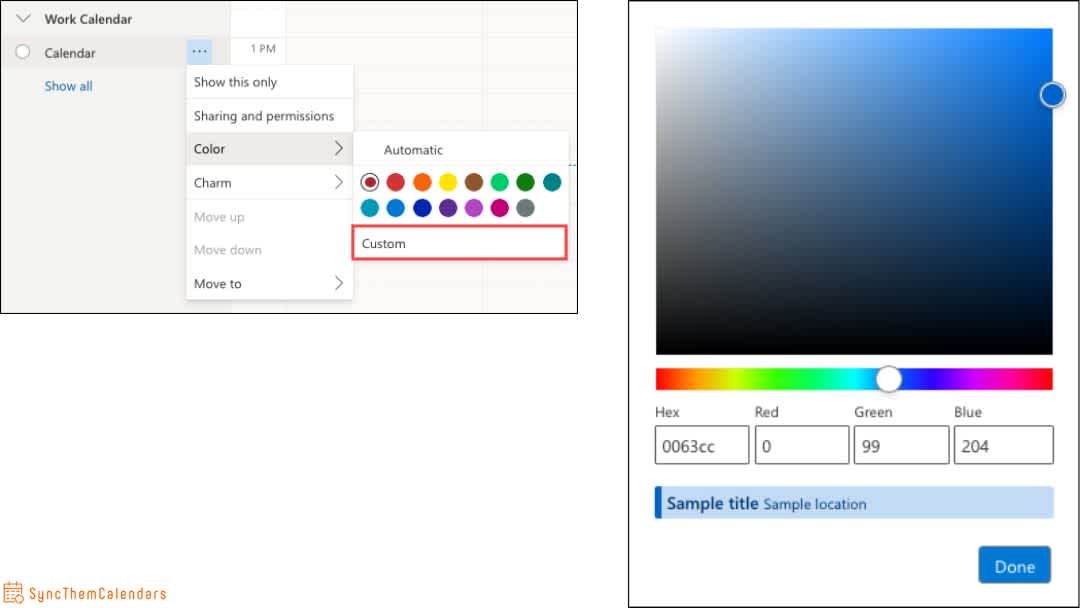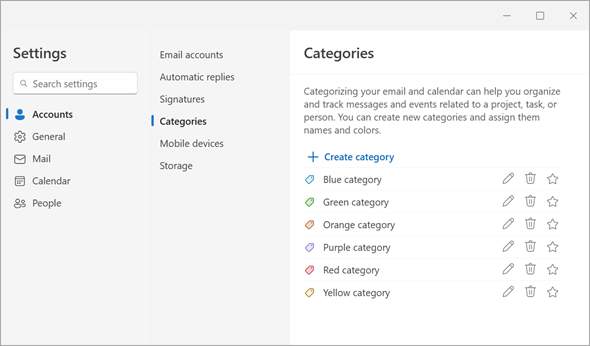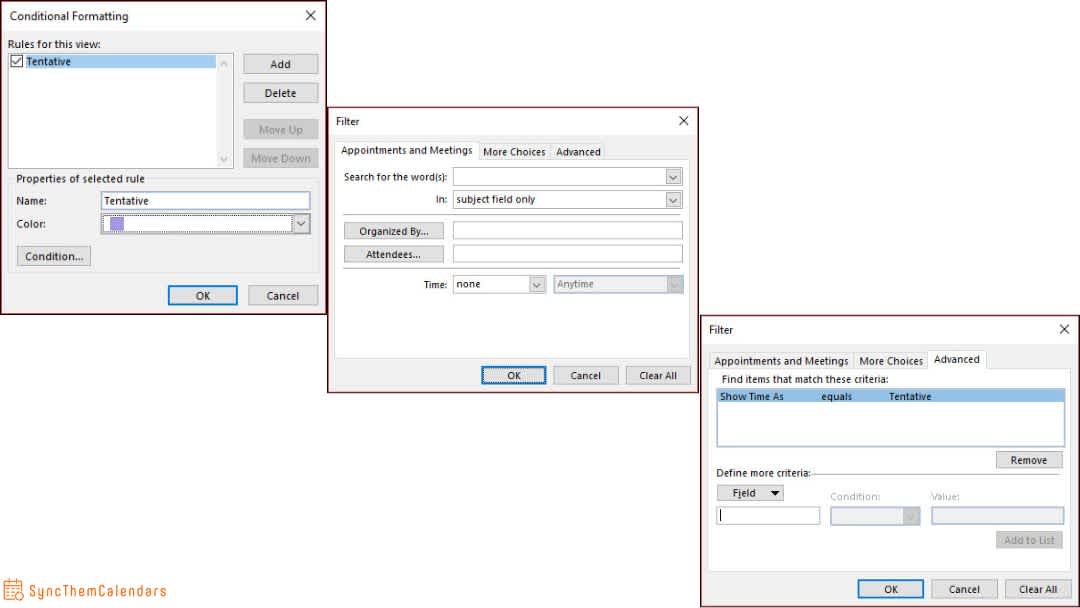Monday morning, you open your Outlook calendar, and everything seems under control. Except at 9 a.m., you show up to a meeting with your boss in jogging attire, ready for your workout session.
Why? Because you forgot to differentiate the colors between your professional and personal events. The result: you confused "Strategic Meeting" with "CrossFit Class."
Discover how to use colors to transform your Outlook calendars into a masterpiece of visual organization.
What Are Colors Used For in Outlook Calendar?
Differentiate Your Various Calendars
If you use multiple calendars (personal, professional, the knitting club), it's essential to distinguish them to avoid getting your wires crossed.
👉 How to Assign a Color to a Calendar?
It's as easy as pie!
- Open Outlook, go to the Calendar section, and click on the calendar you want to color.
- Select "Color."
- Choose the color that pleases you the most.
If you know the color values for a specific color, you can enter the hexadecimal or RGB values in the boxes.
❓ What if I use multiple devices? Calendar colors are generally synchronized across all your devices using the same Outlook account.

Customize Your Calendar by Categorizing Events
You can assign a specific color to a category of events.
Examples: Red for urgent meetings, blue for ongoing projects, green for personal tasks, etc.
- Open Outlook and go to your calendar.
- Create a new event or open an existing one.
- In the event window, look for the "Categorize" option—a dropdown menu with predefined colors will appear.
- Choose a color that corresponds to your event's category.
💡 Bonus Tip: Don't see a category that suits you? Click on "All Categories..." at the bottom of the menu. In the "Color Categories" window, you can create a new category or rename existing ones.

Better Calendar Sharing
When you share your calendar with others using Outlook, your color categories are visible to them.
However, there are some limitations to keep in mind:
- If your colleagues use a different version of Outlook, the colors may not display the same way.
- If the people you share your calendar with use another application (like Google Calendar or Apple Calendar), the colors might get lost along the way.
To ensure everyone is on the same page (and color), establish a common legend: organize a small meeting (colorful, of course) to decide together which colors to use and their meanings. This avoids red meaning "urgent" to one person and "canceled" to another.
How to Optimize My Professional Life Using Colors in My Outlook Calendar?
Check If My Colleagues Are Available
There are five availability statuses in Outlook Calendar, each with an associated color code:
- Free (white)
- Busy (light gray row with dots)
- Tentative (light blue with hatching)
- Outside of Working Hours (dark blue)
- Unavailable or No Information (pink row with crosses)
Manage Visibility and Availability with Conditional Formatting
Have you ever double-booked yourself because you thought you were free? Availability statuses and colors will change your life!
❓ How do colors come into play? They allow you to instantly visualize your status for each event. Here's how to set them up:
- Change the Status of an Event.
- Associate colors with statuses.
Unfortunately, Outlook doesn't automatically assign colors to statuses. But here's a trick to do it: Conditional Formatting.
- Go to your calendar, click on the "View" tab, select "View Settings," then click on "Conditional Formatting."
- Click on "Add" to create a new rule. Give it a friendly name, like "Busy in Red."
- Click on "Condition..."
- Go to the "Advanced" tab.
- Click on "Field," then on "All Appointment fields," and choose "Show Time As."
- In the condition, select "equals" and choose "Busy." Validate by clicking on "Add to List," then "OK."
- Back in the formatting window, click on "Font..." and choose a color (e.g., red for "Busy").
- Click "OK" to validate.

Manage Invitations
Colors are an excellent way to keep control over your invitations directly in your Outlook calendar.
You can apply a specific color to your invitations to organize them according to their priority or status:
- Right-click on the invitation in your calendar.
- Select "Categorize," then choose a color or an existing category.
For example, use red for urgent invitations, yellow for those awaiting response, and green for accepted meetings.
💡 Bonus Tip: If the default colors aren't enough, create your own categories!
Outlook Calendar Color Categories Greyed Out
When you see that the color categories are greyed out in Outlook, it generally means you can't use or modify them. Several reasons can explain this:
1️⃣Limited Permissions: If you're viewing a shared calendar or a folder where you don't have full rights. 👉 Solution: Check the permissions. If you're working with a shared calendar, ask the owner to grant you editing rights.
2️⃣Account Type Limitations: Some types of email accounts don't support color categories the same way Exchange or Microsoft 365 accounts do. 👉 Solution: Consider switching to an Exchange or Microsoft 365 account if you're using an IMAP or POP account.
3️⃣ Offline Mode or Synchronization Issues: If Outlook is offline or experiencing server connection problems, color categories may not be available. 👉 Solution: Ensure that Outlook is connected and synchronized with the server.
Professional Insight: Distinguishing Events from Two Different Calendars
The Limitation of Outlook Calendar
With Outlook Calendar, you can get a view of your different calendars.
⚡ A view is not a synchronization! Each calendar remains entirely independent of the other.
Example: The same event appears in two calendars. If you modify it in Calendar A, it won't automatically be updated in Calendar B.
Only a third-party synchronization application like SyncThemCalendars can synchronize multiple calendars together and reflect changes in real-time.
The SyncThemCalendars Solution
It's the perfect tool to customize your synchronizations by managing multiple calendars simultaneously without confusing them.
Example: You know two Mrs. Robinsons—one in your professional circle and the other, a bit more... intriguing, in your personal circle. What if you showed up to your video conference in a maid outfit? Stay calm: with SyncThemCalendars, you can distinguish the colors of your personal and professional calendars. No risk of offending either Mrs. Robinson.
Enough talk—try it free for 14 days!

Conclusion
Do you share your calendar? Do you manage multiple calendars? Stay zen and use SyncThemCalendars to overcome Outlook Calendar's limitations.
Test it out and feel the difference!
And if you ever need to finely tune your reminders between a source calendar and a target calendar, we've got you covered.


